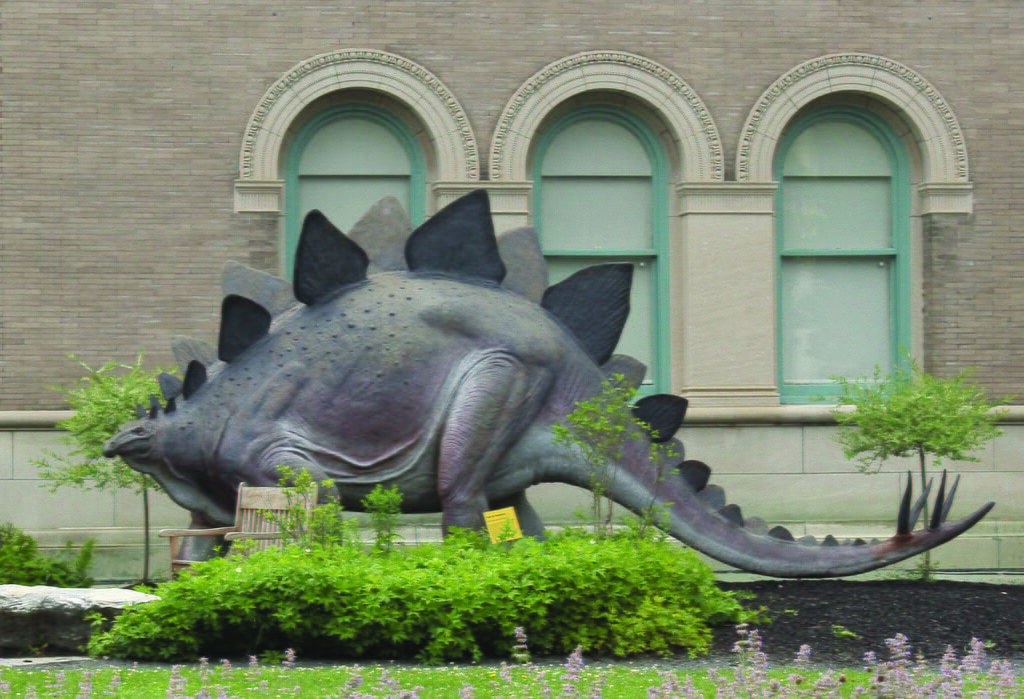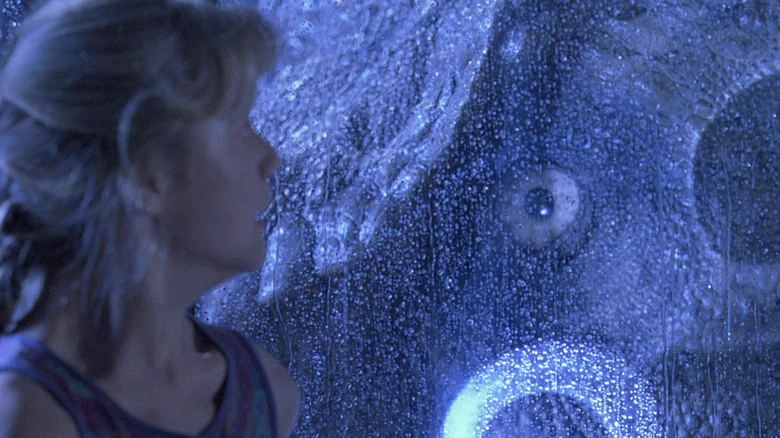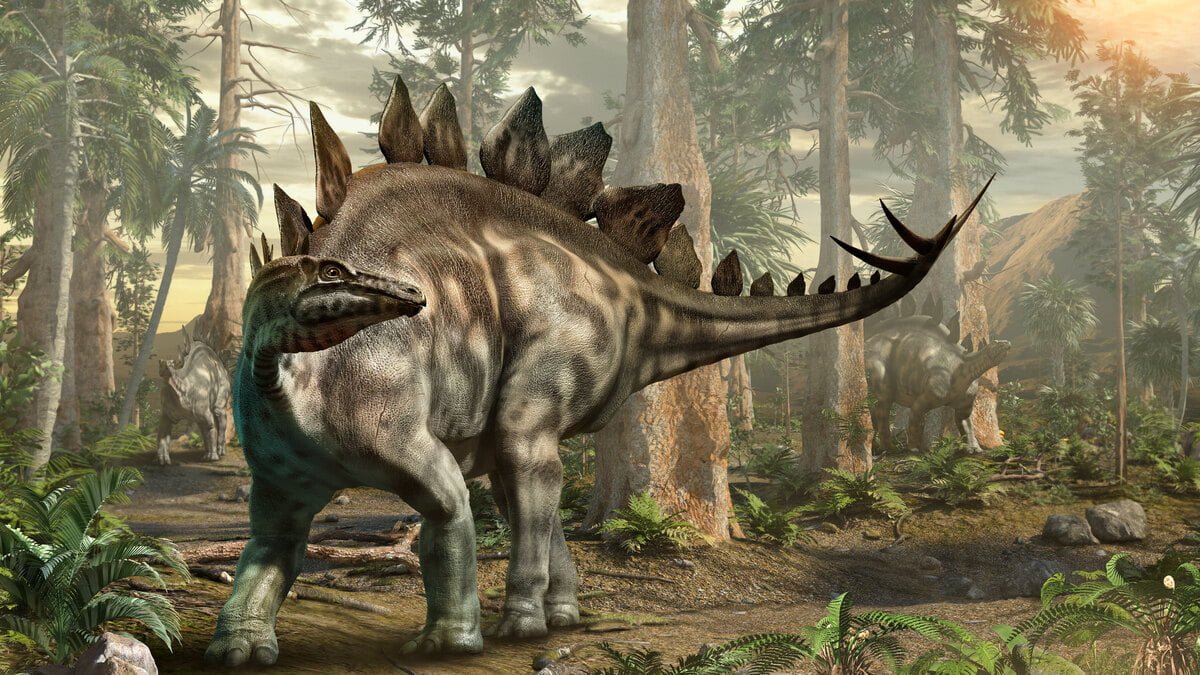In the movie Pacific Rim, massive monsters called kaiju are completely different from any animals on Earth. One scientist studying these monsters describes them by saying, “The kaiju are so large they need two brains to move around, like a dinosaur.” Say what?
You may have heard this dinosaur ‘fact’ before in books or movies. Did dinosaurs have two brains? Let’s look closer to separate fact from fiction.
Dinosaurs did not have two brains. Some had a cavity or tunnel in the spinal column. While paleontologists originally assumed this was a space for a second brain, modern scientists postulate that this was a space for the glycogen body like that found in modern birds.
Great, so that doesn’t clear up this topic. Why did this idea emerge, and why don’t we have a clear explanation to this day? We’ll cover that here, so if you still have burning questions, keep reading.
The Origin of The Dinosaur Butt Brain
The idea that dinosaurs had two brains can be traced back to one man: Othniel Charles Marsh. He was a well-known paleontologist in the 19th century.
He noticed something strange after looking at a dinosaur called Camarasaurus. This dinosaur had an empty tunnel in its spinal column for its spinal cord, just like all animals with a spine. However, this one was special.
This tunnel wasn’t always the same width. The vertebrae by the dinosaur’s hips had a much wider tunnel than the rest. It was so wide that this tunnel was bigger than the space in the skull for its brain!
Later, in 1881, Marsh wrote about the same thing happening in Stegosaurus. This time, though, he called it a “posterior braincase.” Paleontologists and dinosaur fans both had different names for this for a while: the “sacral brain,” the “second brain,” and the “butt brain.”
Only a few years after that, an anatomist named George Linius Streeter said the same thing about ostriches in 1904. The difference is that Streeter did not mean it literally. He used the term “second brain” to describe a large mass of brain-like material that he could not explain at the time.
Back then, people did not think dinosaurs were very smart. Having a second brain did not seem very weird to paleontologists because these dinosaurs were so big and their heads were so small.
Why shouldn’t they have one brain to control the top half and another brain to control the bottom half? Yeah, I know maybe you find this strange but remember that doctors were bleeding patients back then to get rid of bad blood.
Besides having two brains, another popular myth about Stegosaurus is that its brain was the size of a walnut. It does have a very small brain for its size.
The image below shows Wally, a Stegosaurus statue created by famed wildlife sculptor Louis Paul Jonas. He was named Wally due to the myth that the brain was the size of a walnut.

Stegosaurus could grow around 30 feet long (9 meters) and weigh up to 5.5 tons (5 metric tons) but its brain was only about the size of a dog’s. Marsh discovered this in the 1880s, and it led to the popular idea that dinosaurs could not have been intelligent.
What Are Dinosaur Brains Like?
It may not seem possible to study dinosaur brains because they do not fossilize. Unfortunately, the bone of the skull is usually not very thick, so it is easy to crush and break during fossilization.
If a whole skull fossilizes, we can look at the braincase, or the empty space in the skull where the brain sits. This allows us to see the size and shape of the brain. When Marsh took casts of the inside of skulls, he was only able to talk about the size and shape of the brains.
Today, a good cast can tell paleontologists the sizes of different parts of the brain, where blood was flowing in the brain, and whether the brain was doing tasks with the right half, left half, or both. These all tell us a lot about brain activity.
The size of the brain can be hard to tell in dinosaurs. Even if you have the braincase, some of that space was used for jaw muscles that gave dinosaurs their powerful bites. Most paleontologists use reptile brains as a comparison.
Some modern reptiles have brains that only fill up half of their braincase. Fossil reptiles may have used more of that space, however. Because of this, and the fact that dinosaurs are related to modern birds and not modern reptiles, studies have used anywhere from 50% to 100% as the ratio of brain size to braincase size.
The iconic dinosaur movie, Jurassic Park, made it a popular idea that the T. rex had bad eyesight. Specifically, that the dinosaur could not see you if you did not move. We cover this a bit more in our article on Jurassic Park.
If the eyes and the brain do not fossilize, how would we know about their eyesight? Because we can now look at the size and shape of different areas of the brain, sometimes we are lucky enough to know what the senses of the dinosaur were like.
For T. rex, we know that their olfactory bulbs were larger than we would expect. Olfactory bulbs are the part of the brain that gives us our sense of smell, so we know that the Tyrannosaurus had a very good one!

We can also see from the skulls that its eyes were large and forward-facing. It would have had good eyesight for a predator.
This is just an example of how we can study dinosaur brains given the limited materials that we have. Ultimately, we still have plenty of questions left to answer regarding dinosaur intelligence.
What Are These Dinosaur Second Brains?
This tunnel that we see in big dinosaurs like Stegosaurus and Camarasaurus is something we see in most animals. Even humans have a bigger tunnel in the vertebrae of our neck and lower back.
This opening is wider anytime there is more nervous system tissue in the area. For a lot of animals, having strong arms and legs for powerful running or jumping is important. The part of the nervous system that controls the limbs is the same part that is thicker in the spinal cord.
But still, it is different in dinosaurs. This space was so wide that it must have been filled with something besides the spinal cord. The worst part is, that we still don’t exactly know what this area is.
Birds have a very similar space in their hips. This space is filled by something called the glycogen body. It makes sense that their ancestors may have had the same thing.
The problem is we still don’t know the use of the glycogen body in birds. It may be storage for energy, it may help with flight, or maybe it’s an older trait that no longer serves a purpose. Either way, it is still our best guess for this strange structure that started it all.
It still has paleontologists scratching their brains today. If only we had second brains!
Did Dinosaurs Have Two Brains or Not?
So maybe dinosaurs did not have two brains, but now you may be unsatisfied with the answer given here. We know shockingly little about dinosaurs, even after centuries of research.
The evolution of dinosaurs into birds is one big advantage that we have. We can often explore modern bird anatomy and behavior as a reference for their ancestors. In this case, I think this makes the most sense. This chamber of secrets likely held a glycogen body.
What do you think? Let us know by leaving a comment. If you found this topic interesting, we would greatly appreciate it if you would share it with your friends.

